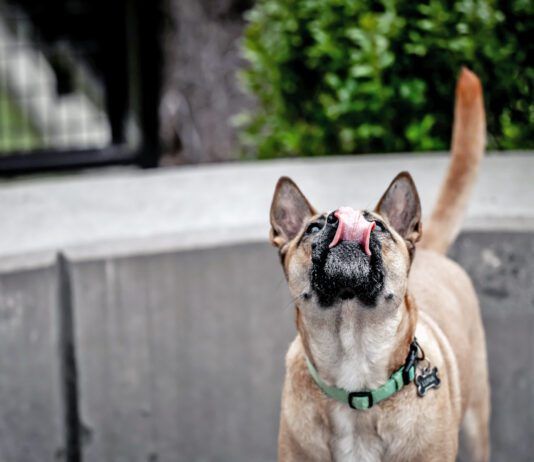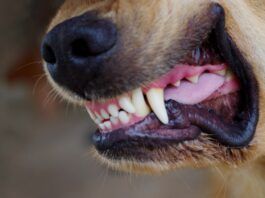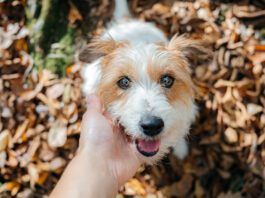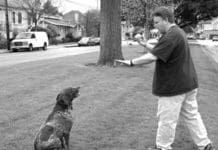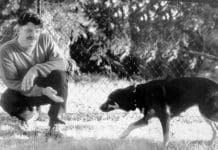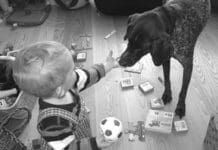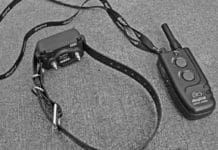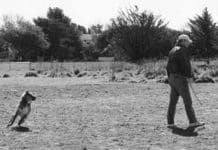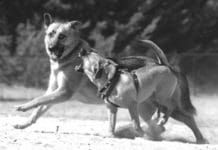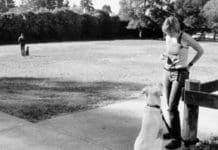Teaching Your Dog Self Control
Recently, at a dog-related event, I had the opportunity to witness dozens of acts of self-control. There was the cute Lab who sat patiently in front of a five-year-old, ice-cream-eating child. There was the mixed-breed dog who politely turned her head and moved away when an adolescent Pug lunged in her direction.
Is Your Dog Bullying Other Dogs?
You can find them everywhere at dog parks and doggie daycare centers, in dog training classes, in your neighbor's yards ... perhaps even in your own home. They" are canine bullies dogs who overwhelm their potential playmates with overly assertive and inappropriate behaviors
Understanding Dog Appeasement Signals
Paradigm shifts in the dog-training world in the last decade have led dog owners and trainers to pay closer attention to the observation, interpretation, and understanding of canine body language.
Help Your Shy Dog Gain Confidence
he needs more distance between himself and strangers.üCarefully engineer any opportunities for your dog to gain positive experiences with strangers; exploit his love of treats!"
The Canine Shock Collar Debate
The chasm between those who abhor the electronic/shock collars as an abusive dog training tool and those who support and promote it as an exceptionally effective and humane training tool is so huge it will probably never be bridged. In more moderate positions in the middle of that chasm are those who believe that the collar can be an effective training tool for very limited circumstances in the hands of skilled professionals, and those who prefer not to use them but feel compelled to educate clients who insist on using them on how to use them properly.
Minimizing Language Barrier Between Human and Canine
Human-dog interactions can be more difficult than dog-dog ones, since our native languages are so different. Our series of three photos this month depicts a classic conflict between a canine and a human; the two are strangers and neither really understands what the other is communicating. Similar interactions are played out every day in communities across the country, in which well-intentioned humans do all the wrong things in their efforts to be friendly with dogs.
Properly Interpreting Your Dog’s Body Language
It's not uncommon for humans to misread perfectly normal play behavior and interrupt/separate dogs who are having a rousing good time together. At the end of Week 2 of my group good manners classes and every week thereafter we have play sessions where the dogs get to play with their canine classmates. In each new class there is at least one owner, often more, who is very tense about her dog's play behavior.
Understanding How Your Dog Communicates
the camera captures a scary expression of aggression that wasn't easily visible to the observer on the ground."
Runaway Dog: Preventing Your Dog From Escaping
How to safely confine burrowers, bounders, beavers, and bolters. Otis the Bloodhound was an opportunistic escapee. I discovered his talent one day while working at the front desk at the Marin Humane Society, early in my animal protection career. A woman came in asking if we might know where a Bloodhound lived, because he kept visiting her house every day. He was charming, she said, but she worried that he might get hit by a car.
Establishing a Good Bite Inhibition
Animal care professionals are fond of saying, “All dogs will bite, given the right (wrong) circumstances.” If that’s the case, how have I managed to suffer only two punctures in a 30-plus-year career working with dogs? Partly through reading and responding to canine body language well enough to avoid provoking an attack (see “How to Save Yourself,” September 2005). Partly, I’m sure, through luck. But largely, I suspect, because many dogs possess a wonderful quality known as “bite inhibition.”
Understand Why Your Dog Growls
Clients always appear a bit stunned at first when I tell them their dog's growl is a good thing. In fact, a growl is something to be greatly treasured. These are my aggression consultation clients, who are in my office in desperation, as a last resort, hoping to find some magic pill that will turn their biting dog into a safe companion. They are often dismayed and alarmed to discover that the paradigm many of us grew up with punish your dog harshly at the first sign of aggression has contributed to and exacerbated the serious and dangerous behavior problem that has led them to my door.
Help for the Home-Alone Dog
As soon as the kids went back to school and Carly was left home alone during the day, things in and around the Hoye’s house began to get chewed. Initially, they thought it was just puppy teething, and to save the rugs and furniture (not to mention the hardwood floors and woodwork around the doors and windows in their restored Victorian) the Hoyes started leaving Carly outside during the day. But she soon advanced to chewing the lattice off the sides of the deck and the shingles off the sides of the house.


